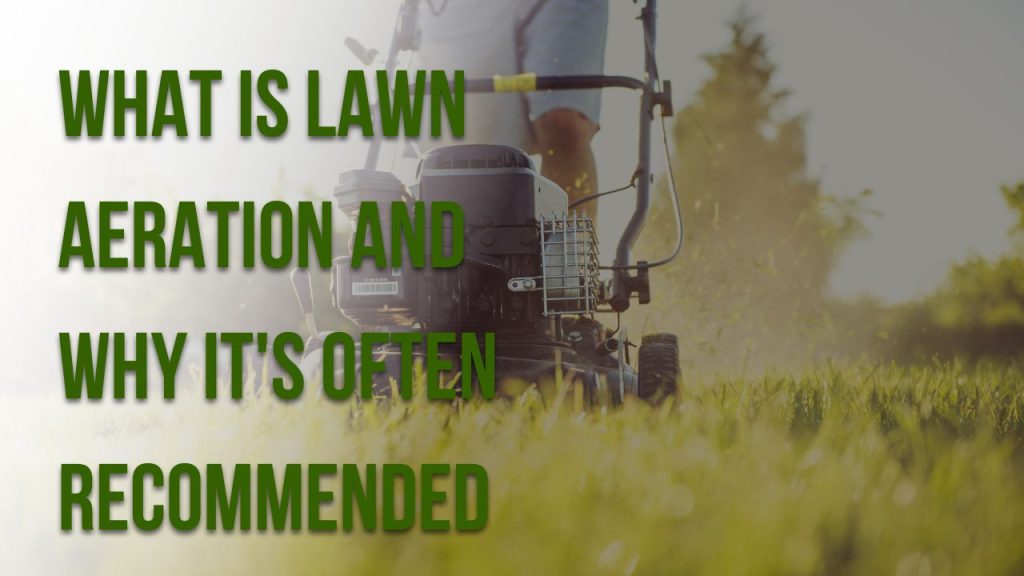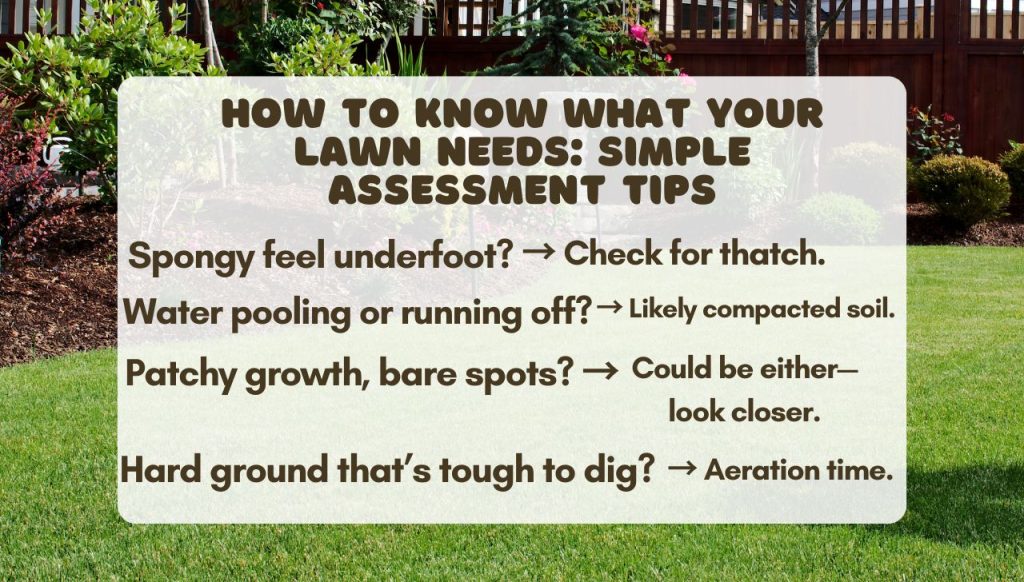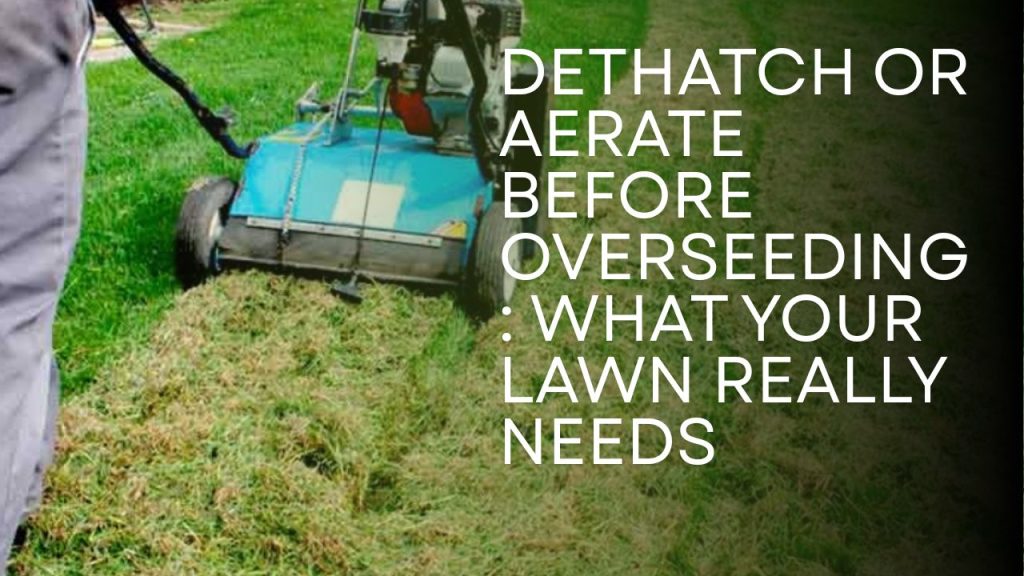Your lawn’s looking patchy. A little tired. Maybe the grass isn’t bouncing back like it used to. So you decide—it’s time to overseed. But then comes the question: Should I dethatch or aerate first?
If you’ve ever felt stuck choosing between the two, you’re not alone. Both processes help grass grow. Both promise better soil contact. But they work in very different ways. And choosing the right one can be the difference between a lush comeback or a wasted weekend.
Dethatching: What It Does and When to Use It
Thatch is a layer of dead grass, roots, and debris that builds up between the soil and living grass blades. Some thatch is normal—even helpful. But too much of it? That’s trouble. Excess thatch blocks water, air, and nutrients. It acts like a barrier. Grass seed can’t get through it. Water pools on top. And roots suffocate below. That’s where dethatching comes in.
Dethatching rips that layer out. It scrapes and pulls it free, letting your lawn breathe again.
When should you dethatch? Usually, when the thatch layer is more than half an inch thick. You can check this by digging up a small wedge of lawn. If there’s a spongy, straw-like mat under the green blades, and it’s thicker than your pinky, that’s your sign. Early fall or early spring is the sweet spot for dethatching. Avoid hot, dry periods. Your lawn will already be stressed, and dethatching might push it over the edge.

What Is Lawn Aeration and Why It’s Often Recommended
Aeration sounds fancy, but it’s simple. It’s the act of punching holes in your lawn. These holes let air, water, and nutrients reach the root zone where grass needs them most.
There are two main types: spike and core aeration. Spike aeration pushes holes into the ground. Core aeration removes plugs of soil. Core is usually better. It avoids compaction and gives longer-lasting results.
Aeration helps if your soil is hard, compacted, or if water runs off instead of soaking in. It’s also a lifesaver for lawns with heavy foot traffic—kids, dogs, backyard barbecues.
If your grass looks weak, thin, or pale, and the ground feels like concrete, aeration could be the fix.
The best time to aerate? Same as dethatching—early fall or early spring. But aeration tends to be gentler. You can sometimes even get away with it during the growing season, especially if you’re careful.
Dive Deeper : Mushrooms In Lawn: Causes, Risks, and How to Manage Them
Key Differences Between Dethatching and Aerating
Dethatching is like exfoliating your skin—scraping away buildup. Aerating is more like acupuncture—opening small paths for things to flow better.
They solve different problems. Thatch is a surface issue. Compaction is a deeper one.
Dethatching can look more dramatic. The machine (or rake) pulls up a mess. Aeration leaves neat little plugs across the yard.
One more thing: dethatching can stress your lawn. Aerating usually doesn’t. So if your lawn’s already weak or newly seeded, go gentle.
Should You Dethatch or Aerate Before Overseeding?
Here’s the real question, right?
If you’re planning to overseed, your goal is good seed-to-soil contact. Without that, your new grass won’t stand a chance.
So—what’s better: dethatching or aerating?
It depends.
If you have a thick layer of thatch—again, more than ½ inch—dethatching is a must. That layer will block seeds, keep them from rooting, and encourage disease.
But if your lawn has compacted soil, or if water isn’t soaking in, aeration is the better choice. It opens things up and creates perfect little seed beds.
In many cases, you might do both. First dethatch, then aerate. That way, you’re clearing out the debris and loosening the soil. This combo gives your new seed the best possible start.
Just don’t do both on the same day if your lawn is fragile. Space it out if needed. Water between steps and let your lawn recover for a few days.

How to Know What Your Lawn Needs: Simple Assessment Tips
Still unsure? Here’s a quick checklist:
- Spongy feel underfoot? → Check for thatch.
- Water pooling or running off? → Likely compacted soil.
- Patchy growth, bare spots? → Could be either—look closer.
- Hard ground that’s tough to dig? → Aeration time.
- Grass looks tired despite regular care? → Might need both.
Take a screwdriver and poke it into the soil. If it slides in easily, compaction probably isn’t your issue. If not, aeration is likely needed. Pull up a small turf plug. Measure the thatch. If you’re seeing more straw than soil, it’s dethatch o’clock. You don’t need fancy tools for this. Just a little time and a sharp eye.
Dive Deeper : When to Fertilize Lawn: A Simple Guide for Healthy Grass
Conclusion
So, should you dethatch or aerate before overseeding?nShort answer: it depends on what your lawn’s telling you. Too much thatch? Dethatch. Soil too hard? Aerate. Got both? Do both. The goal is simple: help your new grass take root and thrive. And to do that, you’ve got to give it room to grow. Listen to your lawn. Feel the soil. Trust your hands and eyes more than a how-to video. You don’t have to be a turf expert. Just observant. Give your lawn what it really needs—not what sounds good in theory. And come spring or fall, you’ll be rewarded with that thick, soft, barefoot-worthy yard we’re all aiming for.

